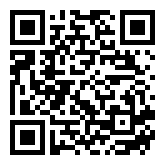Pages:
67-88
Receive Date: 2025/12/21
Accept Date: 2025/12/21
Abstract:
The prevailing view regarding virtual matters is that virtual reality is some sort of imaginary reality or illusion, and what happens in virtual reality is not real. In contrast, virtual realism has put forth four claims: 1) Virtual objects genuinely exist. 2) Events in virtual reality truly occur. 3) Experiences in virtual reality are non-illusory. 4) Life in VR can carry all or most of the values present in non-virtual life. In this article, using an analytical-critical method, while explaining these four claims, it defends realism against the criticisms of followers of imagism, and we will show that virtual realism is an acceptable and coherent position that can explain the reality of virtual objects, events, and worlds.
چکیده و کلیدواژه فارسی (Persian)
Title :واقعگرایی مجازی در ترازوی سنجش (دفاع از واقعگرایی در برابر تخیلگرایی)
Abstract:
دیدگاه رایج در امر مجازی این است که واقعیت مجازی نوعی واقعیت خیالی یا توهم است و آنچه در واقعیت مجازی رخ میدهد واقعی نیست. در مقابل، واقعگرایی مجازی چهار ادعا مطرح کرده است: 1) اشیای مجازی واقعاً وجود دارند. 2) رویدادها در واقعیت مجازی بهواقع اتفاق میافتند. 3) تجربهها در واقعیت مجازی غیرتوهمی هستند. 4) زندگی در VR میتواند تمام یا بیشتر ارزشهای موجود در زندگی غیرمجازی را دربر داشته باشد. در این مقاله با استفاده از روش تحلیلی ـ انتقادی ضمن تبیین این چهار ادعا از واقعگرایی در برابر نقدهای پیروانِ تخیلگرایی دفاع کرده است و نشان خواهیم داد واقعگرایی مجازی موضعی است قابل قبول و منسجم که میتواند واقعیت اشیا، رخدادها و جهانهای مجازی را توضیح دهد.
References:
- Ball, P. (2016). The Tyranny of Simple Explanations, Retrieved from www.theatlantic.com/science/archive/2016/08/occams-razor/495332.
- Beisbart, C. (2019). Virtual Realism: Really Realism or only Virtually so? Disputatio, 11 (55), 297-331.
- Chalmers, D. (2017). The virtual and the real. Disputatio, 9, 46, 309-352.
- Chalmers, D. (2019). The Virtual as the Digital, Disputatio. 11 (55), 453–486.
- Chen, M. (2023). The philosophy of the metaverse. Ethics and Information Technology, 25, 41, 1-13.
- Girvan, C. (2018). What is a virtual world? Definition and classification. Educational Technology Research and Development. 66, 1087–1100.
- Gunkel, D. J. (2008). The Virtual Dialectic: Rethinking The Matrix and its Significance. Configurations, 14 (3), 193-215.
- Jung, C.G. (1969). The structure and dynamics of the psyche. Collected Works of C.G. Jung, Princeton University Press, Pages: 608.
- Juul, J. (2019). Virtual reality: fictional all the way down. Disputatio, 11 (55), 333–343.
- Kahn R. & Wilensky R. (2006). A framework for distributed digital object services. International Journal on Digital Libraries, V 6, 115–123.
- Limm, A. (2022). Why we are not living in the computer simulation? International Journal for the Study of Skepticism, 12 (4), 331-352.
- Ludlow, P. (2019). The social furniture of virtual worlds. Disputatio, 11 (55), 345–369.
- Maselli, A. & Slater, M. (2013). The building blocks of the full body ownership illusion. Frontiers of Human Neuroscience, V. 7, Retrieved from:
- https://www.frontiersin.org/articles/10.3389/fnhum.2013.00083/full.
- McDonnell, N. & Wildman, N. (2019). Virtual reality: digital or fictional? Disputatio, 11 (55), 371-397.
- Ney, A. (2019). On Phenomenal Functionalism, about the Properties of Virtual and Non-virtual Objects. Disputatio, 11 (55), 399-410.
- Nozick, R. (1974). The Experience Machine, Excerpt from Anarchy, State, and Utopia, Retrieved from https://rintintin.colorado.edu/~vancecd/phil3160/Nozick1.
- Psillos, S. (1999). Scientific Realism. How Science Tracks Truth. London: Routledge.
- Reichenbach, H. (1958). The Philosophy of Space and Time. New York: Dover.
- Salmon, W. C. (1998). Causality and Explanation. Oxford: Oxford University Press.
- Silcox, M. (2019). The Transition into Virtual Reality. Disputatio, 11 (55), 437-451.
- Skowron, B. & Steuer, J. (1992). Defining Virtual Reality: Dimensions Determining Telepresence. Journal of Communication, 22 (4), 73–93.
- Thomasson, A. L. (1999). Fiction and Metaphysics. Cambridge: Cambridge University Press.
- Thompson, J. B. (1995). The Media and Modernity: A Social Theory of the Media. CA, USA: Stanford University Press.
- Wright, C. (1993). Realism: Meaning and Truth. Collected Papers on Semantic Anti-realism. 2nd edition. Oxford: Blackwell.
Cite this article:
RIS
Mendeley
BibTeX
APA
MLA
HARVARD
VANCOUVER
APA | MLA | HARVARD | VANCOUVER
rayeji, mohammad, ُSoltani, Mahdi, karam allahi, Neamat.(2025) Virtual Realism in the Scale of Assessment (A Defense of Realism against Imagism). Ma`rifat Falsafi, 22(4), 67-88 https://doi.org/10.22034/marefatfalsafi.2025.5000658
APA | MLA | HARVARD | VANCOUVER
mohammad rayeji; Mahdi ُSoltani; Neamat karam allahi."Virtual Realism in the Scale of Assessment (A Defense of Realism against Imagism)". Ma`rifat Falsafi, 22, 4, 2025, 67-88
APA | MLA | HARVARD | VANCOUVER
rayeji, M, ُSoltani, M, karam allahi, N.(2025) 'Virtual Realism in the Scale of Assessment (A Defense of Realism against Imagism)', Ma`rifat Falsafi, 22(4), pp. 67-88
APA | MLA | HARVARD | VANCOUVER
rayeji, M, ُSoltani, M, karam allahi, N. Virtual Realism in the Scale of Assessment (A Defense of Realism against Imagism). Ma`rifat Falsafi, 2025; 22(4): 67-88
 / A PhD. student of philosophy of sociology, Baqir-u al-Ulum University / m.rayeji97@gmail.com
/ A PhD. student of philosophy of sociology, Baqir-u al-Ulum University / m.rayeji97@gmail.com








